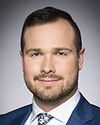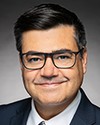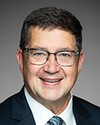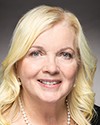Thank you, Mr. Chair, for having me today.
Thank you, all, for looking at this topic of citizen scientists. I think you have an opportunity here, not only to validate the work but also to provide opportunities to strengthen it. I'm eager to tell you why Ottawa Riverkeeper has been engaging citizen scientists in our work as an integral part of what we've been doing for the last decade.
Ottawa Riverkeeper is a trusted, independent voice for the protection of fresh water. A charitable organization founded in 2001, we're a champion for swimmable, drinkable, fishable waters throughout the Ottawa River watershed.
Ottawa Riverkeeper's goal is to better understand and protect the ecological health of the Ottawa River watershed. We are a bilingual organization guided by a science‑based approach.
When you are in Ottawa, you are very likely drinking water from the Ottawa River—cheers. We quite literally depend on this source of life. This is a vast watershed. The Ottawa River watershed is more than twice the size of New Brunswick. It is nested in the world's largest freshwater ecosystem. The Ottawa River itself is the largest tributary to the St. Lawrence at over 1,200 kilometres long, yet we know very little about this waterway.
There are multiple overlapping jurisdictions and a sense of taking it for granted, so we're left with significant data gaps. This leaves us vulnerable and unable to make informed decisions in the best interests of both our human health and ecosystem health.
The work that Ottawa Riverkeeper does, including our watershed health assessment and monitoring initiative, which is a comprehensive suite of scientific monitoring for 14 different indicators of river health, aims to fill these gaps and inform decision-makers like yourselves.
This year we're celebrating our 10th anniversary of engaging citizen scientists. We have involved them in many different scientific studies on many different issues, and I have a few key messages to share with you today based on our experience.
Citizen scientists extend both the reach and the rewards of science. Particularly, NGOs play a critical role in ensuring that this work is done successfully. Here are a few examples of how Ottawa Riverkeeper has done this work.
In 2013, we launched our riverwatcher network. There are over 100 volunteers now who monitor monthly in their stretch of the river for water quality data, pH, temperature, dissolved oxygen and ice cover. We get a really local view regularly along the river stretch to see what is happening, like local impacts of climate change, for example.
In 2015, we worked with the Canadian Museum of Nature to have citizen scientists monitor zebra mussel infestations. That same year, we launched in the city of Gatineau, the island of Hull, looking at E. coli contamination from combined sewer overflows and whether beaches were really healthy to swim at.
Then in 2015, we collaborated with Dr. Jesse Vermaire from Carleton University to look at microplastics in fresh water, and it was the largest group of citizen scientists collecting data on microplastics in a freshwater ecosystem worldwide. We recently co-authored a paper with Dr. Jesse Vermaire.
Last year we had 157 different citizen scientists monitoring across various programs: algae blooms, conductivity testing for road salt chloride levels, total phosphorus, and chlorophyll a.
We are testing and trying to engage citizen scientists across many of our programs because they extend our reach. The geographic reach in such a huge watershed is so much more than what our small team can achieve. It really is exponential in allowing us to monitor across the whole watershed. It also expands our capacity for monitoring the frequency with which we could monitor and, very importantly, they bring local knowledge, which enriches the data and also informs better decision-making based on that data.
They extend the rewards. We believe that people protect what they love, and they love what they know and understand, what they're familiar with. Citizen scientists have this direct hands-on engagement by knowing the river, and this translates to more and more people actively engaged in protecting those waterways.
Critical to all this success are ENGOs, like Ottawa Riverkeeper. We're trusted. We have connection with community, which lends credibility and brings in people to be involved in this work.
This is where we can offer long-term support, if we have funding and the capacity to make sure that we can be a strong third sector supporting citizen scientists and decision-makers.
Thank you.





